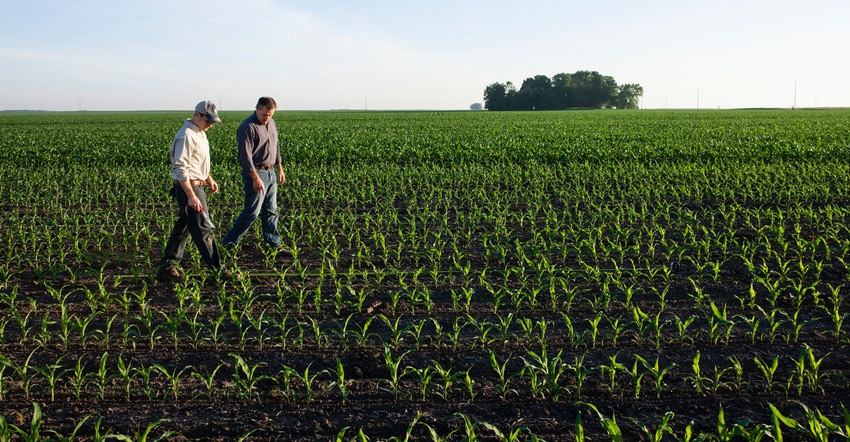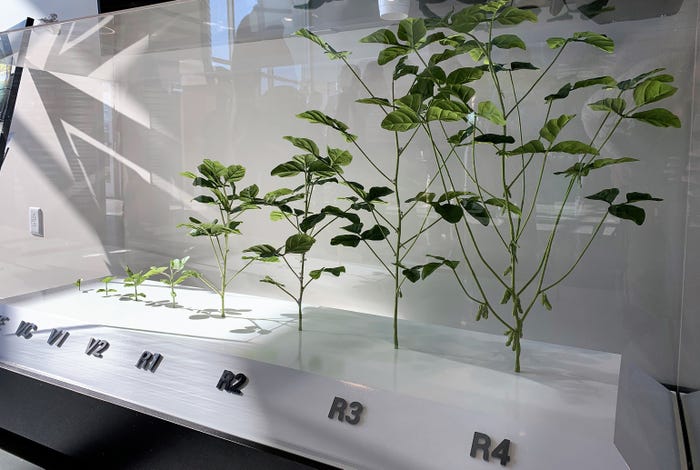
Drive-by crop scouting is not the best way to determine crop needs. Baylee Jordan, technical agronomist with Channel, says there are four key times when farmers should get out of the truck and into the corn and soybean fields.
Jordan, who covers southwest Missouri and southeast Kansas, says farmers should look at plant vigor, pest feeding and disease pressure at each stage of a plant’s life. She says farmers can evaluate the crop alone or work with a Channel seedsmen throughout the year. Either way will offer an early diagnosis and remedy in order to reach the best profitability potential out of every acre.
Here are the four growth stages to assess during the corn and soybean season:
1. Seedling. At this stage, the farmer is looking at emergence. “Did we get the stand that we were looking for, that plant uniformity, did all of our plants emerge evenly?” Jordan says. Farmers should then start checking for seedling diseases. Often these manifest below the soils.
Several different pathogens can cause these diseases, and the most common tend to be Fusarium, Rhizoctonia, Phytophthora and Pythium. They can kill and rot seeds before germination or cause seedling death, which may be the reason for spotty emergence. Jordan says waiting for optimum soil temperatures above 55 degrees F can help mitigate some damage from disease.
2. Vegetative. This phase is where farmers determine the health of the plant. “We're looking to make sure that the plant tissue is healthy, and there's no obvious nutrient deficiencies coming on,” Jordan explains.
For instance, as the corn plant reaches this growth stages, plant nutrient requirements start ramping up. For example, in a corn plant, the ear is being determined by V6, Jordan explains.
“We want to make sure that there aren't any pests, like slugs or beetles or anything that are out there eating that leaf tissue that would take away that plant's photosynthetic factory," she says.
Jordan says a root check can indicate problems. “Pull some plants and makes sure the roots are a nice, white color,” she says. It applies to both corn and soybean plants.

Understanding a plant’s growth stages can help farmers target field scouting efforts. This is a display of soybean growth stages at the Center for Soy Innovation in Missouri.
3. Reproductive. This is around the R1 stage of plant growth in corn. Farmers should be out in cornfields looking for diseases such as gray leaf spot and southern rust. “Then we determine if we need to apply a fungicide,” Jordan notes.
In soybeans, the reproductive stage is where seed is filling pods. Soybean growers need to scout for insects that are eating on those pods. “They can cause issues with seed development inside the pods,” Jordan adds.
However, this stage is where farmers get a sneak peek at the crop. “There are a lot of things that occur from R1 through maturity, seed fill and grain fill,” Jordan says, “but it really gives them a snapshot of how the year is tracking for them.”
4. Maturity. In this final growth stage, it is all about yield estimates. Farmers are out counting ears in cornfields and getting final soybean stand counts. But in corn, this is also the time to evaluate stalk health and integrity. Jordan says it is one thing many farmers just simply forget.
She likes using the push-pull test where she and growers walk up and down corn rows pushing and pulling on the stalks to see resistance. “You want to make sure those stalks aren’t going to go down at harvest,” she notes. She says this simple test can help a farmer prioritize his harvest plans. Those fields that are more susceptible to stalk failure should be harvested first.
Don’t go it alone
Farmers can ask a Channel seedsman for help in the field. The Field Check Up Series offered by the company includes on-farm visits conducted at the same four key stages of crop development.
“One of the advantages to the Channel seedsman is they’re there from start to finish with their customers, and probably know their field second-best to their customers,” Jordan says.
After each stage during the Field Check Up Series, the grower receives a report. The information serves not only as a history for the field, but also as a reminder of what happened early in the season, so a grower can prepare for harvest, Jordan adds.
However, she says one of the biggest draws to the program is the ability for a grower to talk through problems. “They are able to bounce ideas and questions off their Channel seedsman,” Jordan says. “The grower never has to feel like they’re having to diagnose or make a decision by themselves.”
About the Author(s)
You May Also Like






